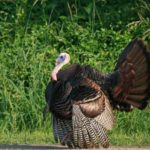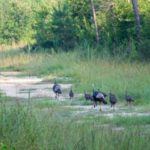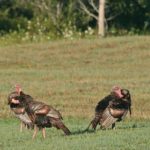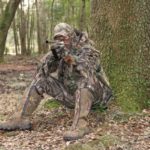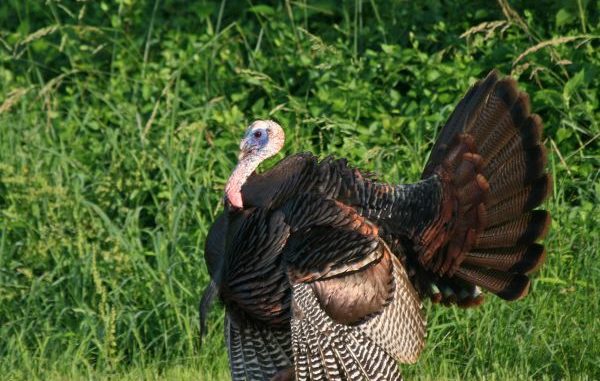
Will there be more or fewer turkeys in the woods when the season opens next month? This state biologist said things are looking pretty good.
Spying on mothers walking their children is considered inappropriate in most cultures — unless, of course, you’re eyeballing turkeys for the annual poult survey that gives interested parties a reasonable forecast for upcoming turkey seasons.
Those interested parties would be Louisiana hunters and the state’s Department of Wildlife and Fisheries, whose task it is to help ensure plenty of game for folks to shoot.
As the LDWF’s Wild Turkey and Resident Small Game Program Leader, Jimmy Stafford takes his poult counting very seriously. And based on relevant observations, he believes turkey hunters will enjoy a good level of opportunity this season.
“I think that it’s going to be improved from 2013, and the reason I say that is we had a pretty good hatch in 2012, and that’s generally the birds that you’re harvesting — those 2-year-old birds,” Stafford explained. “And our indications were that this past season, we had a lot of jakes show up and get killed, so that’s another indication of good production.”
Stafford said a good hatch requires normal rainfall, if not a little on the dry side during the nesting phase. Consider how a leaky roof in the hospital maternity ward can cause a lot of perilous disruptions. Same thing goes for turkey nests.
“You don’t want those two- and three-day rains because you can have some mortality,” Stafford said. “After the nesting phase, you want a regular rain pattern — once a week or once every two weeks, at the most, so you’ll get adequate insect production, which is what they’re primarily feeding on.”
Turkeys are hardy creatures, but nature swings a big stick. These birds can handle the regular ups and downs of temperature and precipitation, but weather extremes — droughts and floods — are the bane of nesting efforts.
“Along the Mississippi River and Atchafalaya River Basin, we always have the issue of flooding,” Stafford said. “If you get a flood at the wrong time of the year, it can tremendously knock you back (on nesting success).
“We’ve had that in recent years, and we’re still recovering in some of those areas. We’re still recovering from some (flodding) in the Atchafalaya and Mississippi River basin. We’ve made some progress in some of those flood-prone areas, but we have a long way to go to recover from where we were a decade back.”
Franklinton hunter Mike Williams can attest to this: He’s been calling gobblers in Southeast Louisiana for over 30 years, and he said the specter of 2005’s tropical devastation still lingers in his region.
“It’ll be a struggle, as it has been basically ever since Hurricane Katrina,” Williams said. “The problem we have here at home is we have more turkey hunters than we do turkeys.”
That said, Stafford said the lack of recent weather extremes bodes well for turkey hunters statewide.
Most promising, he said, is the northwest/north central region.
“The piney woods and north (regions) had good production this past year, and they’ve had good production past two to three years, so I’m expecting big things in that region,” Stafford said. “In some of our other areas, production was more mediocre, so with the exception of that (northern) region, we may see reduced jake harvest in some of our parishes.
“But in that northern region, we should see a strong jack harvest (go) up there.”
Worth noting is that jake harvest numbers don’t necessarily tell the full picture of a turkey population. In fact, Stafford said high or low numbers of juvenile gobblers can often be little more than hunter discretion.
Some won’t risk the smack talk from camp buddies who frown on blasting young birds. Other might prefer a longbeard but won’t hesitate to fill those Ziploc bags with tender jake meat.
Personal preference shouldn’t be taken as an overall indicator — unless more definitive factors exist.
“A lot of people get concerned when they see a high jake harvest, but we’ve done enough studies to show that we’re only harvesting a fraction of our jake population,” Stafford said. “So, when I see a high jake harvest, that simply tells me there are a lot of them out there.
“I don’t get alarmed at a high jake harvest, unless it corresponds with a terribly low adult bird kill: That would indicate that there were a lot of desperate hunters who couldn’t get an adult so they had to shoot a Jake. But if we have a moderate-to-normal adult harvest combined with an increased jake harvest, then that tells me we have a lot of (jakes) out there and production was good that year.”
Stafford noted that a recent LDWF survey asked hunters if they wanted to prohibit jake harvest, as in other states. The consensus, he said, was that hunters want that option left on the table.
“I think we have a lot more hunters willing to pass up jakes,” Stafford said. “Thirty years ago, hardly anybody would pass up jakes, but now most of the hunters I know will pass up jakes. So, it’s not as big an issue as some people think it is.”
So, how do the state’s wildlife managers establish the annual turkey forecast? Well, it’s pretty much just like we said at the get-go: It’s a lot of baby watching.
As Stafford explained, the process assimilates input from multiple sources, starting with LDWF personnel who log random observations made during the course of other duties.
The state also solicits assistance from about 150 private individuals throughout the state. Additional input from the Department of Agriculture, the Department of Forestry and the U.S. Fish & Wildlife Service helps provide a reasonable representation of how many poults have hatched.
“We have a pretty wide range of individuals who help us with the poult survey,” Stafford said. “There are years when our data is a little weak in certain areas if we do not have a lot of observation in those particular areas, but consistently it has matched fairly closely with what we see in jake harvest in that subsequent hunting season.”
Timing is critical for survey accuracy, with July and August the key months. Most turkey eggs hatch in May, but premature poult counting typically yields unrealistic numbers that haven’t accounted for that first wave of predation.
However, by the year’s third quarter, remaining poults are the ones most likely to reach recruitment age.
“We feel like if we start surveying birds as soon as we start seeing them walk — when they’re 4 inches tall — with increased predation the likelihood of that poult making it to the fall as a recruited bird is somewhat limited,” Stafford said. “You get a lot of avian predation from owls and hawks, while raccoons, skunks, possums and snakes will work on the eggs.
“So we give them a little time to get a little age on them, and as they get a little taller — by the time they’re 4 to 6 weeks old — their likelihood of survival is greater.”
Hearsay is the fuel of speculation, but when local chatter finds its roots in fact it merits consideration. Case in point: The western longleaf pine region of the state, where hunters might find better-than-expected results.
“They had good production last year,” Stafford said. “This year was more moderate, but I feel they’ll still have a good year there.
“We’re seeing a lot of birds, and based on what I’m hearing from people in that area it may be a little bit better than what we’ve calculated.”
Such local input adds to the outlook, but Stafford said he weighs the unofficial reports with discretion.
“We throw it all in the mix, but we hang our hat on those solid numbers (from the surveys),” he said. “You have to be careful about listening to what a handful of people tell you, but if you get enough of those people telling you over and over again, ‘We’re seeing a lot of birds, we’re seeing a lot of young birds,’ we may have underestimated production, at least in certain portions of that region.”
